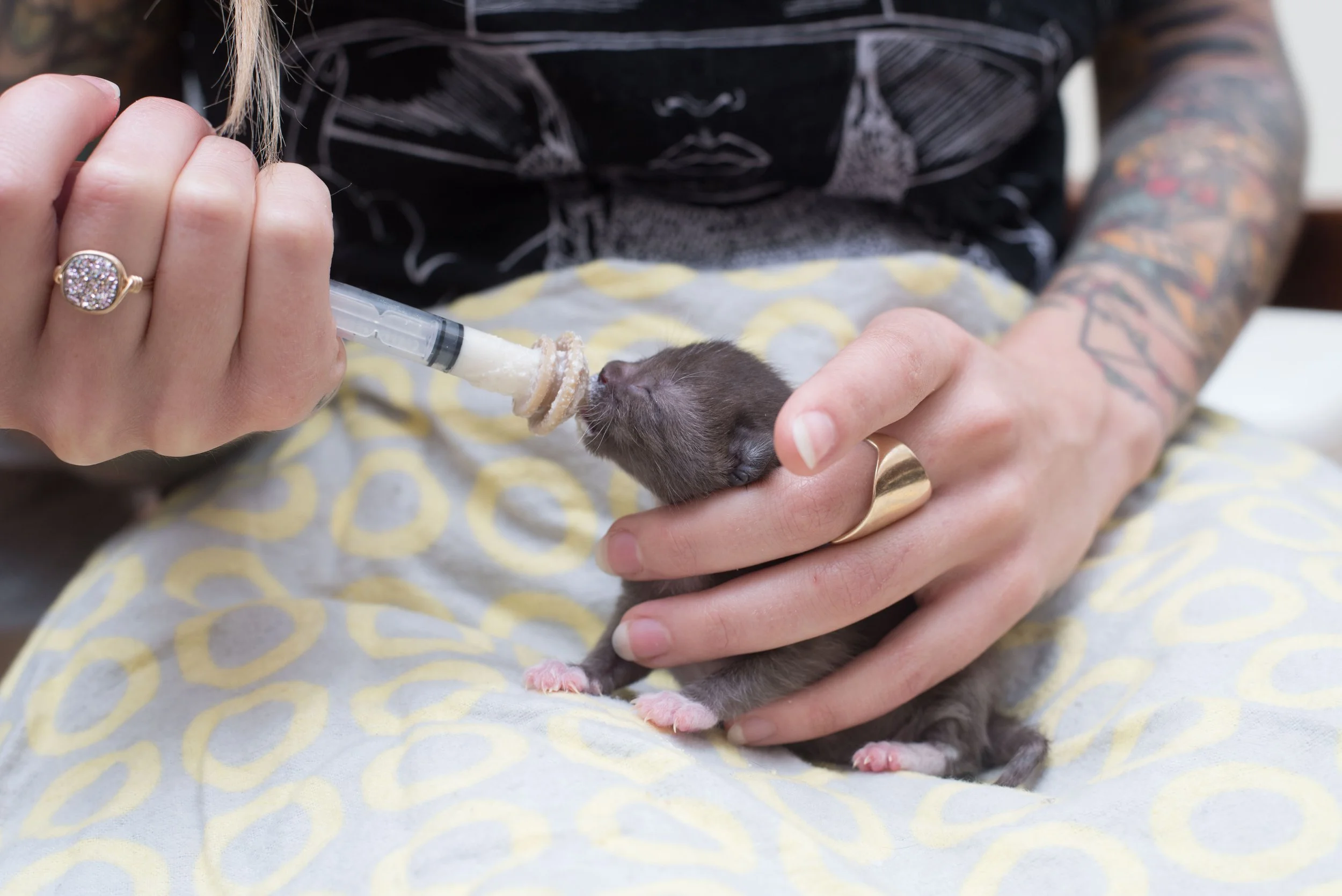Stimulating Kittens
Young kittens don't pee and poop on their own; mama cats stimulate them to go to the bathroom by licking them. If you're raising an orphan, you'll need to help them by stimulating them at each feeding.
How to Stimulate Kittens
At each feeding, gently rub the kitten around their genitals in a circular motion using a soft, absorbent, disposable cloth such as a tissue or toilet paper, avoiding harsh products like heavy paper towels which could irritate the kitten's skin. You don’t need to apply a lot of pressure here; this is simply about creating light friction that encourages the kitten to eliminate.
The body position for stimulating kittens can vary. Some people prefer to sit the kitten upright on a table, some prefer to hold them upright with their bottom facing the floor, and some prefer to turn them on their back. Find the position that works best for you and the kitten.
Hold the kitten steady with one hand, and gently rub the genital region in a circular motion with your soft tissue. The kitten should begin to pee. Continue to stimulate the kitten until she is no longer peeing. Depending on the kitten's age, this may take anywhere from 10 to 40 seconds, and 1-4 tissues.
If the kitten needs to poop, you may notice that their abdominal muscles will tense. Continue to stimulate their bottom the whole time that they are pushing; this helps encourage them to continue engaging their muscles. Stimulate along the side of their anus until they’ve finished their business!
When to Stimulate Kittens
Orphaned kittens need to be stimulated at each feeding from birth until 3-4 weeks of age. As they approach 4 weeks of age, you may introduce a shallow litter box, but continue stimulating them until you see that they are regularly using the box.
Stimulate the kitten as part of each feeding to help keep them on a healthy and regular schedule. Follow the weight and feeding chart to determine the frequency of feeding routine. While you can stimulate the kitten before or after the feeding, it’s recommended to do this before—so that they’re comfortable and ready to eat! Watch a short kitten care routine to learn more.
What’s Normal—and What’s Not
Urination: The kitten should urinate at every feeding. Urine should be light yellow or clear in color; if dark, this may be a sign of dehydration. If you’re concerned that a kitten isn’t peeing, gently palpate the belly to determine if you can feel an enlarged bladder, which will feel like a small balloon. If the bladder is full and the kitten isn’t urinating upon stimulation, try stimulating them in a different posture, using a warm wet cloth, or in worst case scenario you may very gently express the bladder.
Defecation: Bottle baby poop should be well formed, mustard yellow in color, and may occur as frequently as 1-2 times a day or as infrequently as every other day. If you're concerned about the frequency or consistency of the kitten's poop, you can check out my article on constipation and consult a veterinarian for assistance. Learn more about kitten poop problems in my kitten poop webinar!
Keep Them Clean
Don't miss this step! Even if the kitten's skin feels dry after peeing or pooping, you still want to wipe them down with a wet cloth or a kitten safe baby wipe afterwards to keep them clean. Kittens have sensitive skin and are susceptible to urine scald, a form of moist dermatitis caused by urine residue that burns and irritates the skin. You can help kittens stay comfortable by gently wiping them down after stimulating.
If the kitten does get urine or fecal scald, keep the area clean at all times and apply a light ointment to help them heal.





